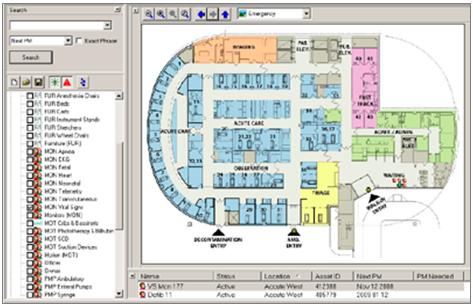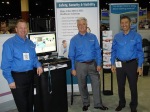Here are some words about one of our products – EIRIS:
EIRIS Visibility & Security Management Software from Visonic Technologies is an affordable, end-to-end solution; providing real-time monitoring, command and control in a single unified system for today’s most demanding security and safety applications.

EIRIS is ideally suited for today’s organizations that are seeking to effectively and reliably self-monitor and manage their security and safety operations. Out-of-the-box, EIRIS enables seamless integration of access control, intrusion detection, digital video surveillance, patient protection, duress alarm monitoring and asset tracking into one, easy to use, enterprise-class security platform.
Function Summary
Robust Client/Server architecture
Intuitive Tools for alert Configuration
Intuitive alarm handling screens
Interactive, multi-layered graphical map displays
Dynamic graphic monitoring & control
Live CCTV alarm/event integration
Automatic event/alarm recording
Detailed event and tracking reports
Integration with third-party applications
Web and PDA client support
Windows & XML based Web Services APIs
Standard Features:
Network Configuration Tools
EIRIS’ intuitive configuration tools enable commissioning and database enrollment of all wired and wireless system devices without the need for programming experience.
Automated Security Processes
Enables user definable, rule-based events and alarms, (triggerable by location and status), for automating and enhancing monitoring and response processes.
Dynamic graphic monitoring & control
Supports real-time interactive, multi-layered graphical map displays for monitoring and controlling device status, system events and all security/safety alarms.
Bundled Localization Editor
EIRIS’ bundled language localization editor customizes user interfaces and menus for different locales Supports Asian languages and right-to-left scripts (Hebrew and Arabic).
Scalable System Expansion
Modular, multi-site, client/server architecture supports easy system expansion without interruption of service as needs grow.
Open APIs Extend Functionality
Open Application Program Interfaces (APIs) offer real-time,
bi-directional alarm/event processing and control with legacy security, life safety and back office systems.
Integrated Incident Reporting
EIRIS’ integrated report generator creates historical reports of alarms, tag movements, device status and event times for enterprise-wide information delivery.
for more information about our products please visit our home website.
 Visonic Technologies and Rauland-Borg announce the interoperability of Elpas RTLS technology with legacy Responder IV Nurse Call installations. Thanks to Responder 5’s new interoperable platform, hospitals implementing the Network Adaptor Module (NAM) to update their Responder IV installations can now utilize the open integrations functionality of Responder 5 Software to add Elpas RTLS technology. Now Responder IV installations can support real-time staff presence functionality throughout the hospital to room and sub-room level accuracy, automatic visual indication that a patient’s needs are being responded to and automatic nurse call cancellation.
Visonic Technologies and Rauland-Borg announce the interoperability of Elpas RTLS technology with legacy Responder IV Nurse Call installations. Thanks to Responder 5’s new interoperable platform, hospitals implementing the Network Adaptor Module (NAM) to update their Responder IV installations can now utilize the open integrations functionality of Responder 5 Software to add Elpas RTLS technology. Now Responder IV installations can support real-time staff presence functionality throughout the hospital to room and sub-room level accuracy, automatic visual indication that a patient’s needs are being responded to and automatic nurse call cancellation.

 Visonic Technologies (VT), announces the immediate availability of the new Elpas2 RF Ethernet Reader. This 433MHz, RFID/RTLS reader is designed to detect and relay ‘Location’ and ‘State’ data from Elpas Active RFID Asset, Personnel or Infant Protection Tags to host applications over wired or wireless Ethernet/Wi-Fi networks to enable the real-time monitoring and tracking of assets or personnel.
Visonic Technologies (VT), announces the immediate availability of the new Elpas2 RF Ethernet Reader. This 433MHz, RFID/RTLS reader is designed to detect and relay ‘Location’ and ‘State’ data from Elpas Active RFID Asset, Personnel or Infant Protection Tags to host applications over wired or wireless Ethernet/Wi-Fi networks to enable the real-time monitoring and tracking of assets or personnel.
 Almost 3 years ago, in the
Almost 3 years ago, in the 


